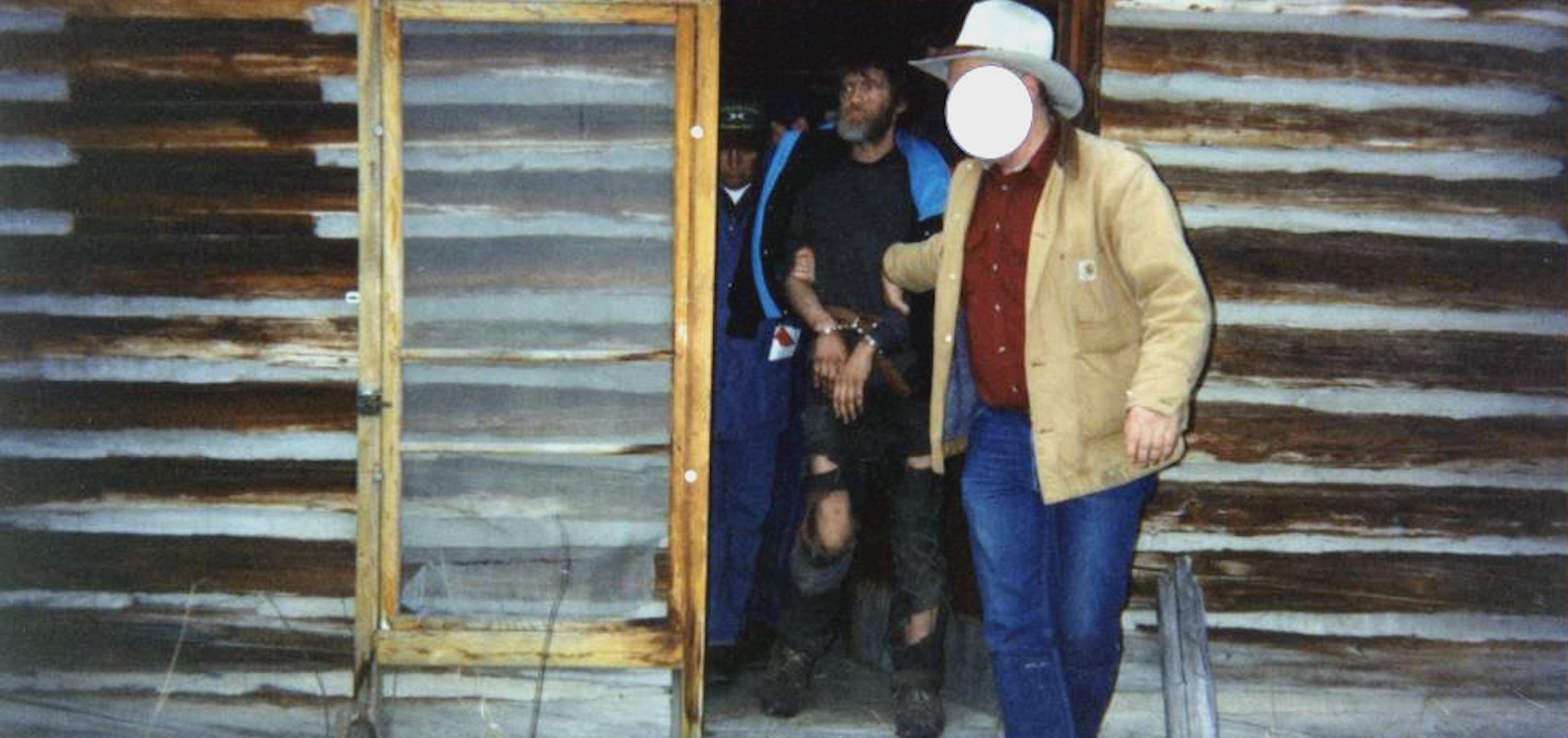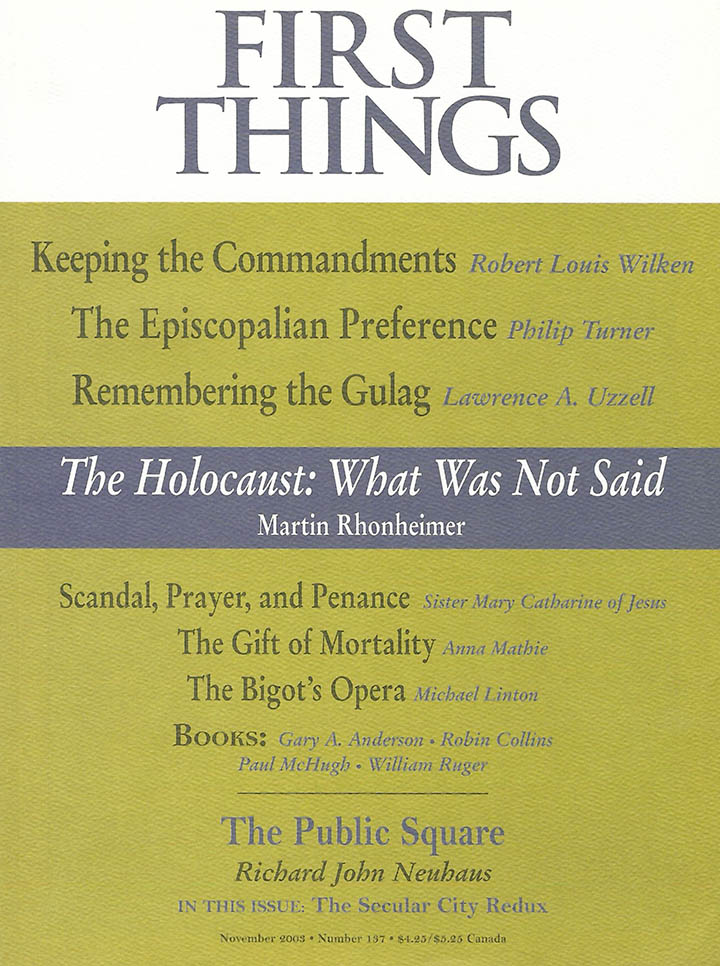
Harvard and the Unabomber: The Education of an American Terrorist.
by Alston Chase
W.W. Norton. 432 pp. $26.95
Beginning in 1978 and continuing until he was apprehended in 1996, Theodore Kaczynski manufactured and mailed sixteen bombs to prominent Americans working in biological and computer science and environment technology. Dubbed the “Unabomber” by the FBI, he killed three people and cruelly maimed eleven others in these attacks. When captured, he had a seventeenth lethal bomb on the shelf requiring only stamps and an address to wend its way to another victim.
In Harvard and the Unabomber: The Education of an American Terrorist , Alston Chase, a philosopher and student of intellectual history, describes Kaczynski’s acts, the sufferings he inflicted on the unsuspecting, and how his estranged brother eventually unmasked him once he recognized Theodore’s style of thought in the 35,000-word document or “manifesto” he blackmailed the New York Times and Washington Post into publishing. But Chase is not aiming merely to provide a biography of a serial killer. Rather, he wants to describe cultural forces at play in America after World War II”forces that may have provided the energy and motivations for this celebrated terrorist. This latter intention is what makes the book unique and its conclusions worthy of careful examination.
Of special interest is Chase’s opinion about the claim, made in Kaczynski’s legal defense, that he suffered from some variant of paranoid schizophrenia. After examining Kaczyn-ski’s writings and many public statements, Chase concludes (and I agree) that Kaczynski was and is sane. Although Kaczynski tends to expand verbosely on his opinions, his thoughts always remain coherent and directed by a conscious design. He justifies his objectionable behavior not with weird or eccentric delusions but with beliefs about the corruptions of technology, the fragmentation of society, and the growing commercial injury to our planet’s environment that plenty of Americans share. Indeed, Chase refers to the ideas in Kaczynski’s “manifesto” as clichés and thus far from delusional.
Schizophrenics express their thoughts in incoherent ways and harbor beliefs unshared by others, usually encompassing a suspicion that they are targets of attention. Kaczynski did not believe that those who were spoiling the world noticed or were in any way interested in him. He believed they were injuring the earth and the culture for all of us and that he—and he hoped others eventually—should find a way to fight back. The assassin attacking from the shadows is not a delusional thinker but a gutless scoundrel.
Much of Chase’s book is devoted to explaining how Kaczynski became that scoundrel. Kaczynski grew up in a working-class community in Chicago. Aware of their son’s intellectual gifts, Kaczynski’s parents pushed him to achieve. He moved quickly, skipping a grade in grammar school and entering Harvard College to study mathematics in the late 1950s when he was sixteen. He was thought socially withdrawn and somewhat arrogant by his peers but did well at Harvard and even better—with prizes to prove it—during graduate study at the University of Michigan. He then spent a couple of years on the mathematics faculty at the University of California at Berkeley in the late 1960s—right when that school was disrupted by draft riots and other violent protests against American life. From Berkeley though, Kaczynski went off the rails, leaving mathematics and academic life to find a plot of land in rural Montana where alone, in a small cabin, he began building bombs and killing people.
Chase constructs an explanatory thesis from these facts. He thinks Kaczynski’s parents pushed him “relentlessly” for conflicting academic and social goals. And Chase describes what Kaczynski took from the Berkeley scene and its radicals. But he neither lingers on popular psychological themes nor expands on the antiestablishment violence of the Berkeley campus to explain Kaczynski’s terrorist behavior. He has a more original explanation to propose.
According to Chase, Kaczynski was set on his destructive path by a “culture of despair” ubiquitous at Harvard College in the 1950s. The General Education courses that all Harvard undergraduates were re-quired to sample for their bachelor’s degree were permeated by this culture. Chase believes that in these courses Kaczynski was exposed to books and teachers who portrayed all traditional moral values as meaningless or at least “irrational.” These courses also taught that advances in science and technology had brought forth the power to debase rather than advance our civilization. Nietzsche, the Dostoevski of Notes from the Underground , and the Freud of The Future of an Illusion—all of which dismissed the belief that human life has a purpose—these were standard fare in Kaczynski’s courses and the bread and butter of college discussion groups, or so Chase maintains. All of them had supposedly devastating effects on Kaczynski’s conception of the world and eventually emerged as arguments in his “manifesto.”
Compounding this intellectual misdirection was what Chase describes as a traumatic assault at Harvard on Kaczynski’s mental integrity carried out in the name of psychological research by one of the college’s eccentric professors, Henry Murray—he of the Thematic Apperception Test (TAT). Murray recruited volunteers from among the gifted Harvard undergraduates for personality assessment (without completely informing them what they would face). Murray intended to challenge their personal ideas so as to see how they stood up to “stress.” For this purpose the victims’ worldviews (whatever they might be) were confronted and their presentations of themselves scornfully attacked during an hour-long session by interviewers skilled in disputation. Harvard undergraduates, presumably being more than usually sensitive about their intellectual prowess, lost, at least momentarily, some of their “self-esteem,” and Murray studied how they responded and recovered.
Most did find the experience transiently disturbing (although not all, some were amused). But, Chase holds, this deflationary and challenging experience alienated Kaczynski by disclosing just what psychologists were willing to do to people. This experience more than any other, Chase repeatedly claims, prompted Kaczynski to seek “revenge.”
Chase seizes upon this event because he is arguing against the commonly held opinion that the culture of the 1960s was responsible for the Unabomber. He wants to claim that ideas and practices from the fifties”particularly at Harvard” were to blame. Yet Chase can’t help pointing out other causes as well, such as worries about America’s guilt in the Cold War, Vietnam, and the poisoning of the ecology. But as these more general causes are added to the list, Chase’s thesis dissolves into a mixture of psychobabble and left-leaning political commentary about how Kaczynski could have felt, should have felt, and must have felt.
The only direct evidence of how the young student at Harvard did feel was an essay written in his sophomore year, just before the Murray experiment. It concludes with this summary. “The most important parts of my philosophy [are]: The desirability of competition and struggle. There is no morality or objective set of values. The importance of independence.” This reads more like Ayn Rand than Harvard General Education. And again, one is left to wonder how this stance provides a foundation for terrorism.
Many of Chase’s facts founder on similar inspection. The Harvard General Education syllabus from which students selected courses was much more diversified than Chase claims. Chase does not identify the courses Kaczynski took but rather describes his own General Education courses, presuming that the nihilism he found was standard in the syllabus. But the General Education courses that I took in the 1950s—taught by such noted teachers as John Finley and Samuel Beer—instilled in students a confidence in Western Civilization.
But more to the point, while Chase works hard to explain Kaczynski’s ideas, he neglects to explain Kaczynski’s violence except for vague references to his “need for revenge.” But the Unabomber’s ideas and their sources, given their prevalence, don’t need all that much explanation. It is Kaczynski’s brutal assaults that are singular, and for their villainy Chase offers no coherent explanation.
Herein lies the biggest problem with the book. It displays a lack of indignation toward Kaczynski and an excess of indignation towards Harvard and the 1950s. The emphasis on commonplace arguments urged by college sophomores on each other totally overlooks the viciousness of the behavior. Surely Harvard College, its General Educational programs, and a stressful but fundamentally silly pseudo-experiment cannot bear the moral responsibility for Kaczynski’s terrible actions.
Chase passes by Kaczynski’s treachery and so avoids the burden of explaining it. Rather than an intellectual thug depriving people of hopes and plans, families and friends, Chase describes a misguided sophomore whose parents pushed him too hard to succeed.
The ideas that Chase identifies as significant to Kaczynski”such as the view that matters of morals are “emotive” rather than “rational””will not in themselves deprive their holder of emotions and hence of empathic appreciation for the suffering of others. Something more is needed to explain the absence of the capacity to participate in another’s feelings of anguish and dismay.
Here we face a common enough problem in the study of disordered behavior. If a person has no obvious mental illness”that is, no illness recognizable from identifiable symptoms and signs distinct from the behavior one is seeking to explain”then a much more elaborate study of the life, especially the interior life, of the perpetrator is required than the one Chase provides or can provide from the published record.
Given what we do know, a simple explanatory hypothesis for Kaczynski’s behavior would be the following. As an intellectually gifted but rather socially inept person, he learned from the nihilists and picked up some of the antitechnology culture in college. At the same time he ignored, probably from arrogance, much that helped other students keep their sense of proportion, even when mistreated by some of the more foolish Harvard faculty members (of which there are always some). Later, when he faced obstacles and resistances in such matters as his sexual life and professional attention, he indulged in ruminations on the past, baseless recriminations, and vicious daydreams, all in an isolated cabin removed from corrective interactions with other people. As we know from the coded journal found in his cabin, Kaczynski’s reflections and reckonings led, inexorably, to the corruption of his character.
In “The Stare’s Nest by My Window,” W. B. Yeats described this human potential for self-corruption more clearly than anyone: “We had fed the heart on fantasies, the heart’s grown brutal from the fare; More substance in our enmities than in our love.” Once one recognizes that the villainy of Kaczynski’s behavior, and not the ideas in his “manifesto,” is what needs to be explained, the belief that a pathological antitechnology culture at Harvard in the 1950s turned an upstanding, bright, socially vulnerable student into a vicious killer is simply absurd.
Restoring the Chaplain Corps’ Moral Backbone
Secretary of War Pete Hegseth announced that he is revamping the U.S. military’s chaplain corps as part…
Just Stop It
Earlier this summer, Egypt’s Ministry of Religious Endowments launched a new campaign. It is entitled “Correct Your…
Kathy Hochul, Champion of the Culture of Death
Yesterday, New York Governor Kathy Hochul announced her intention to sign the Medical Aid in Dying Act,…


